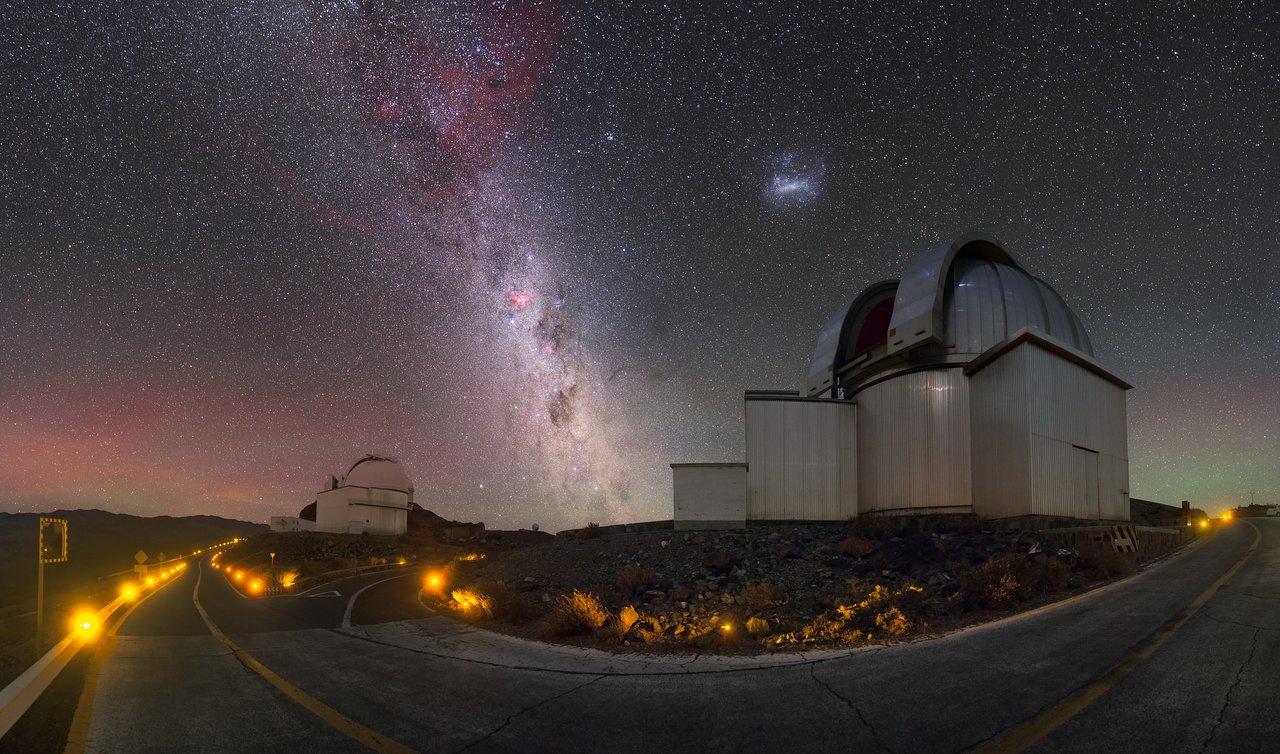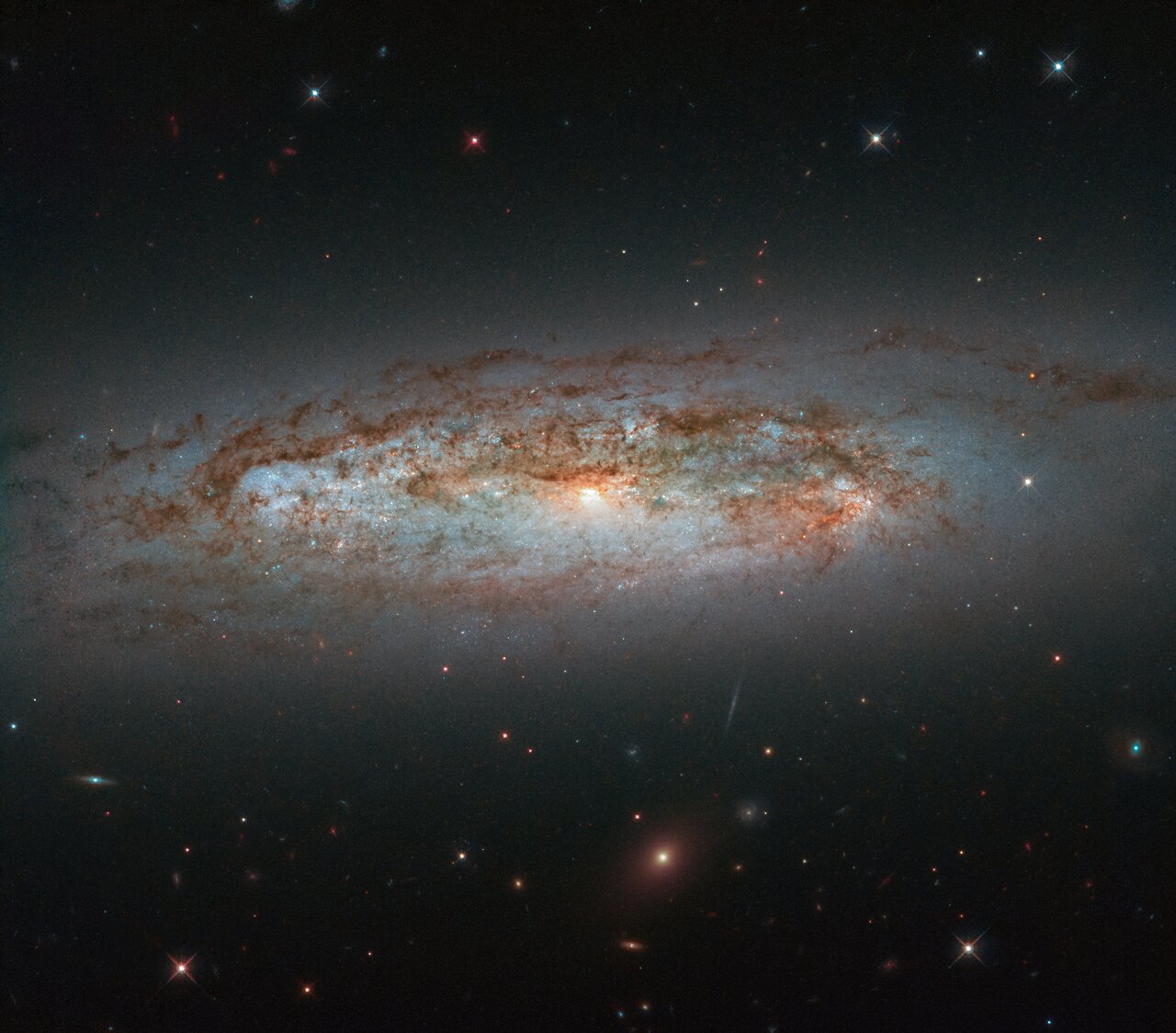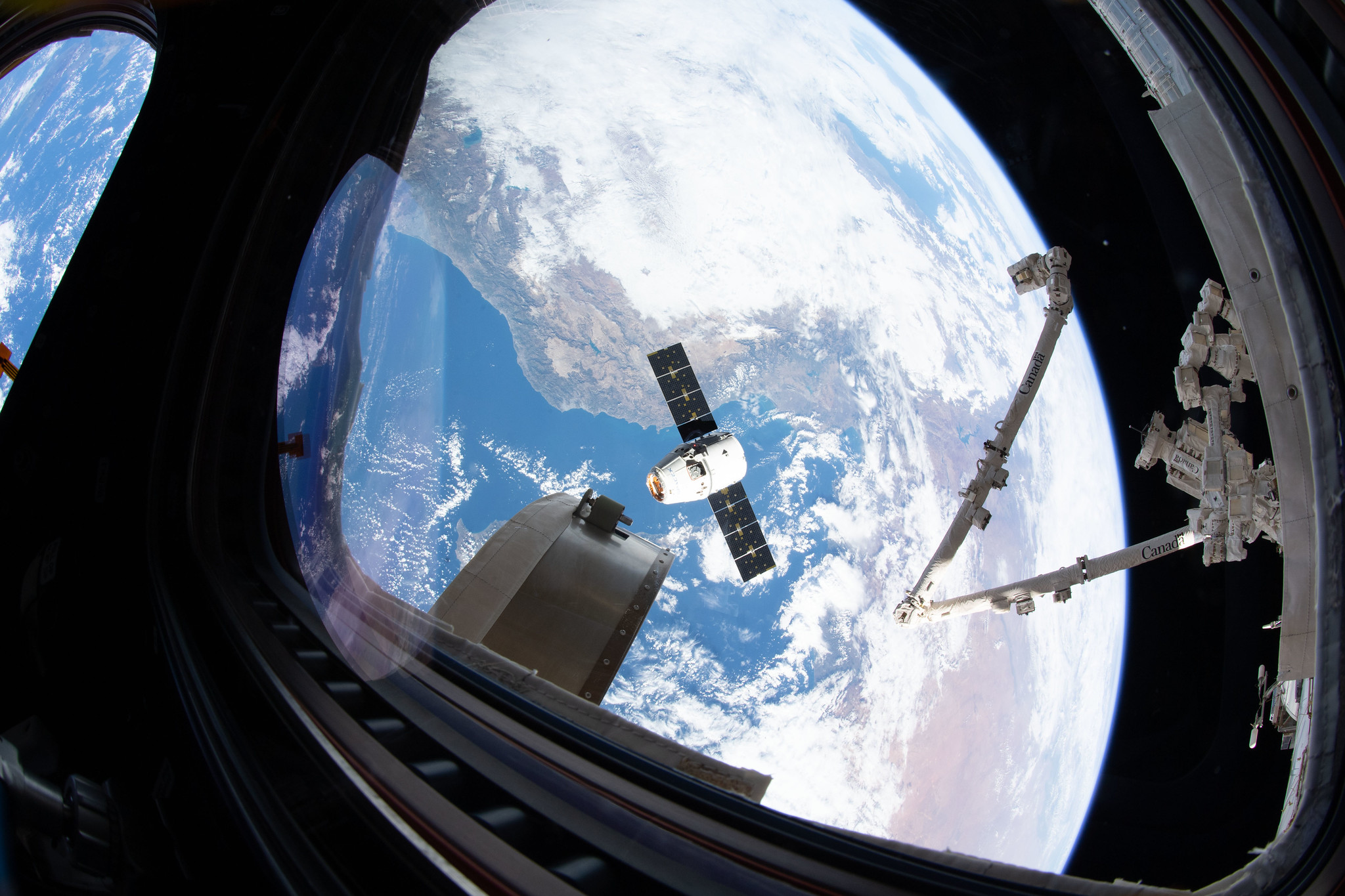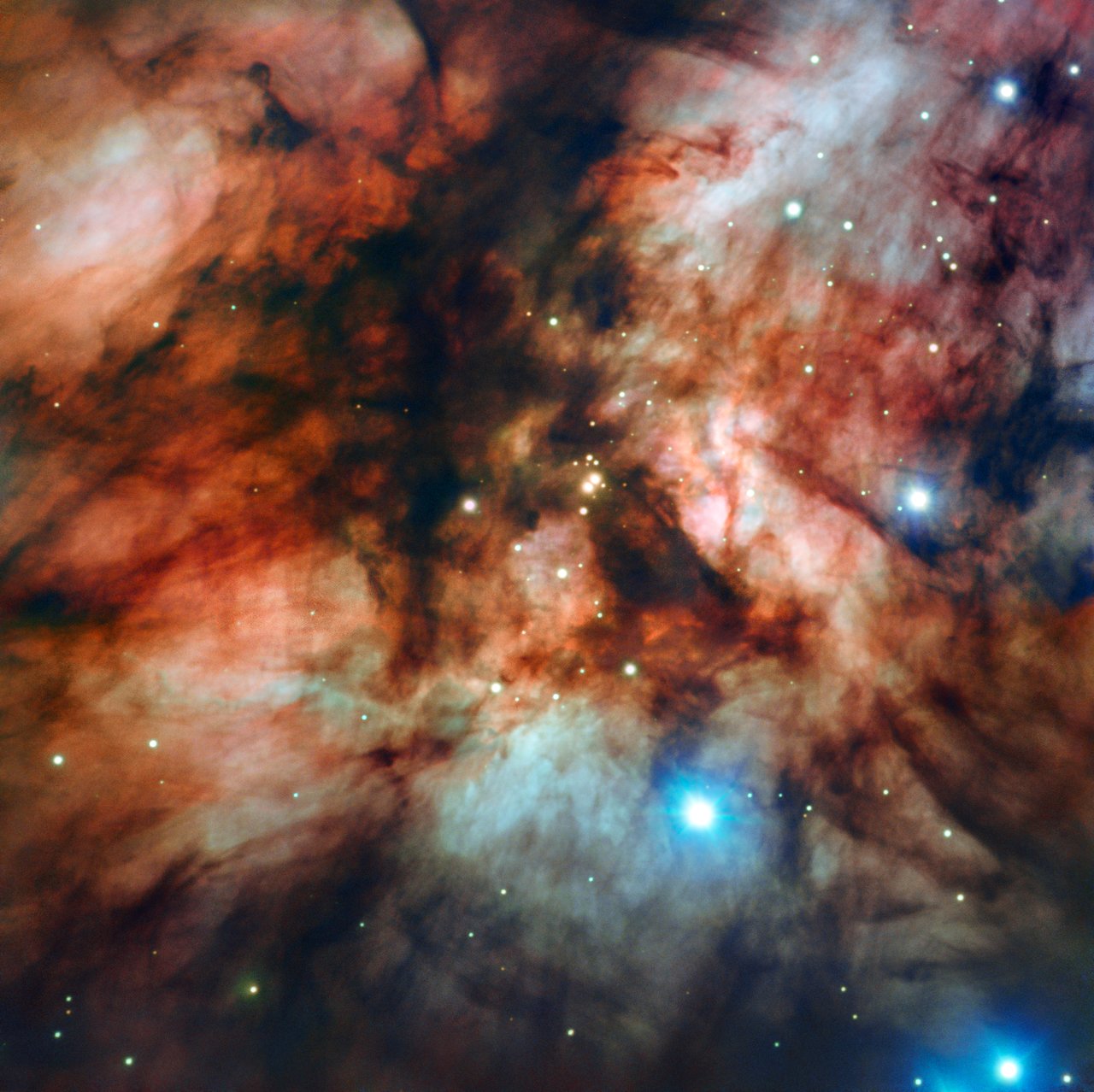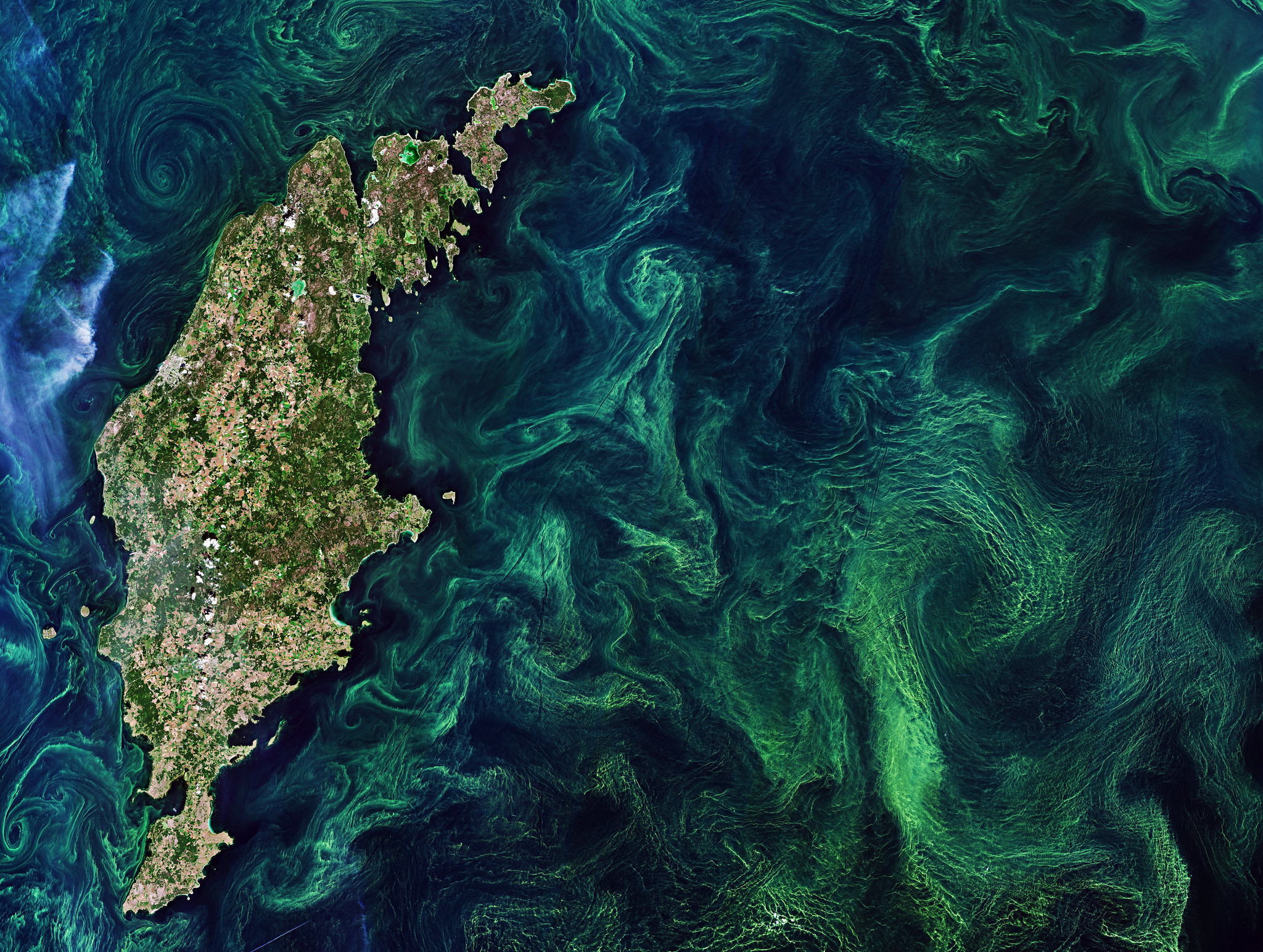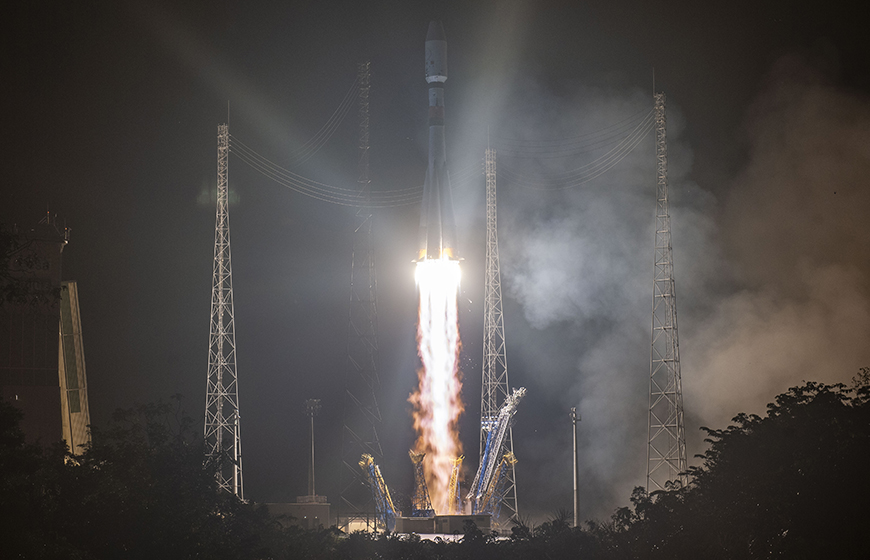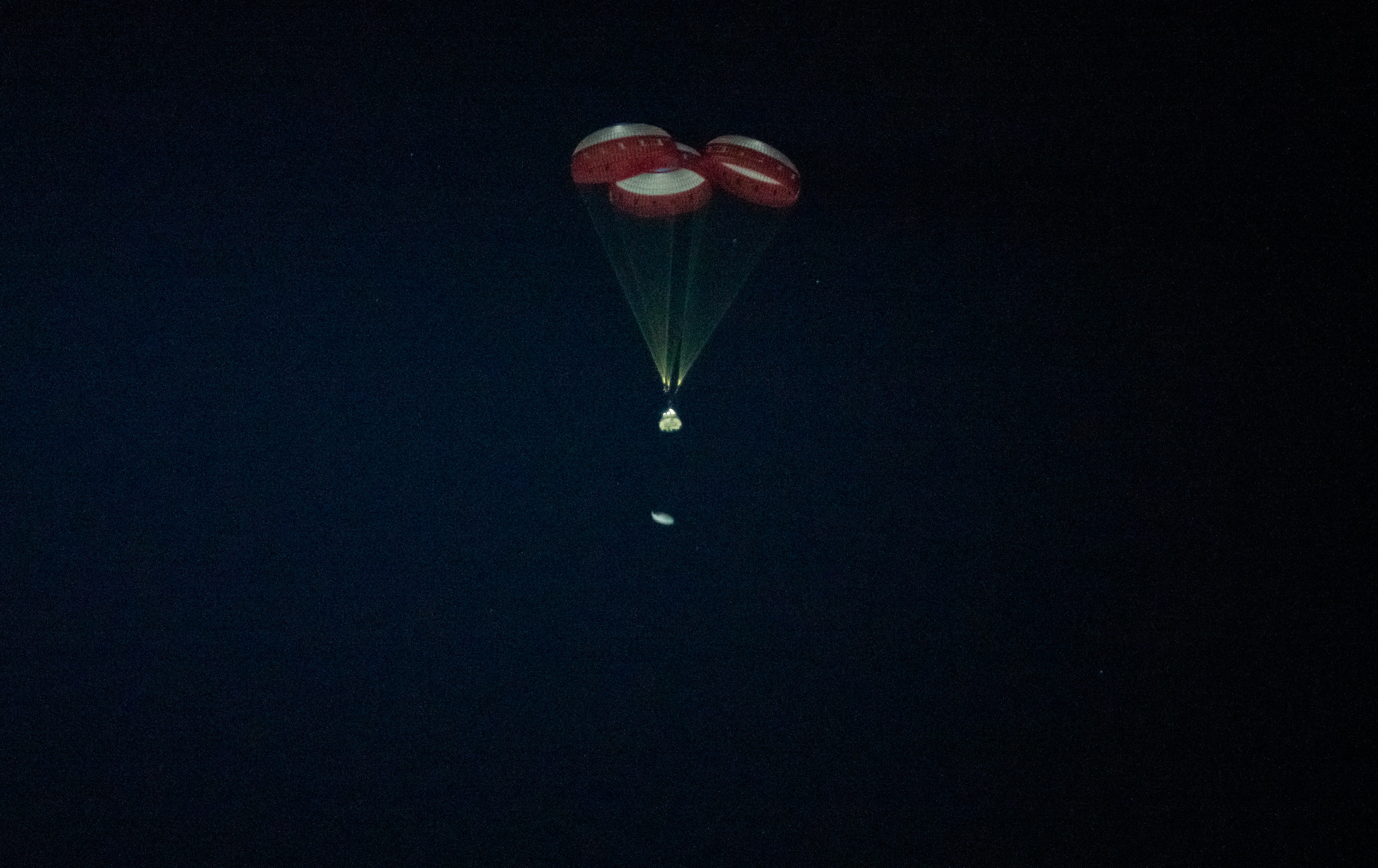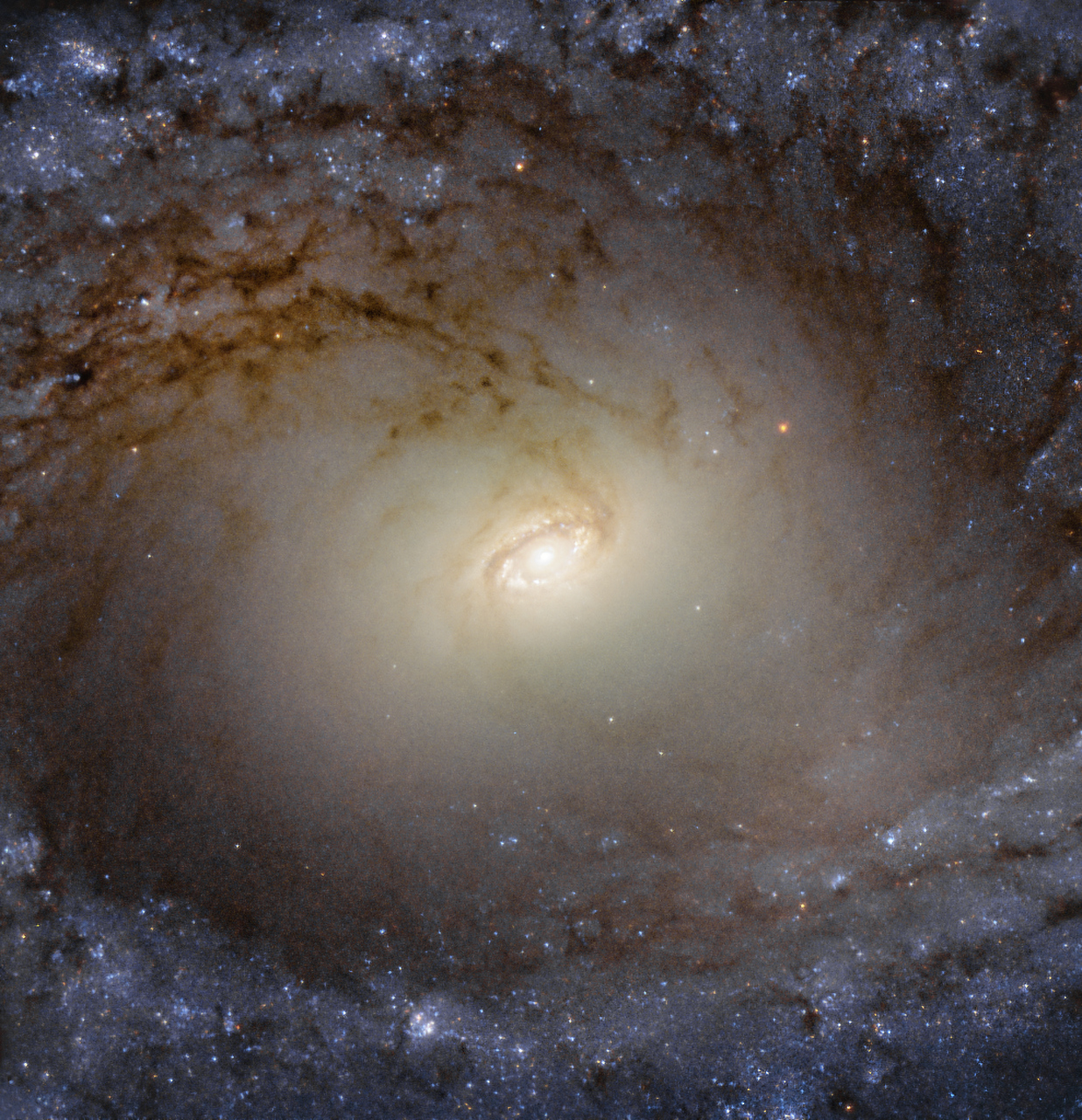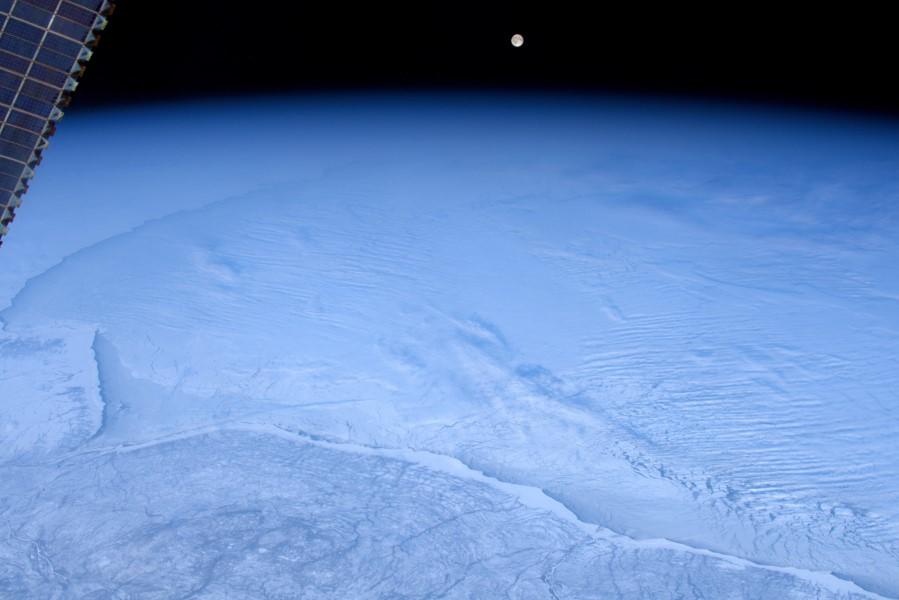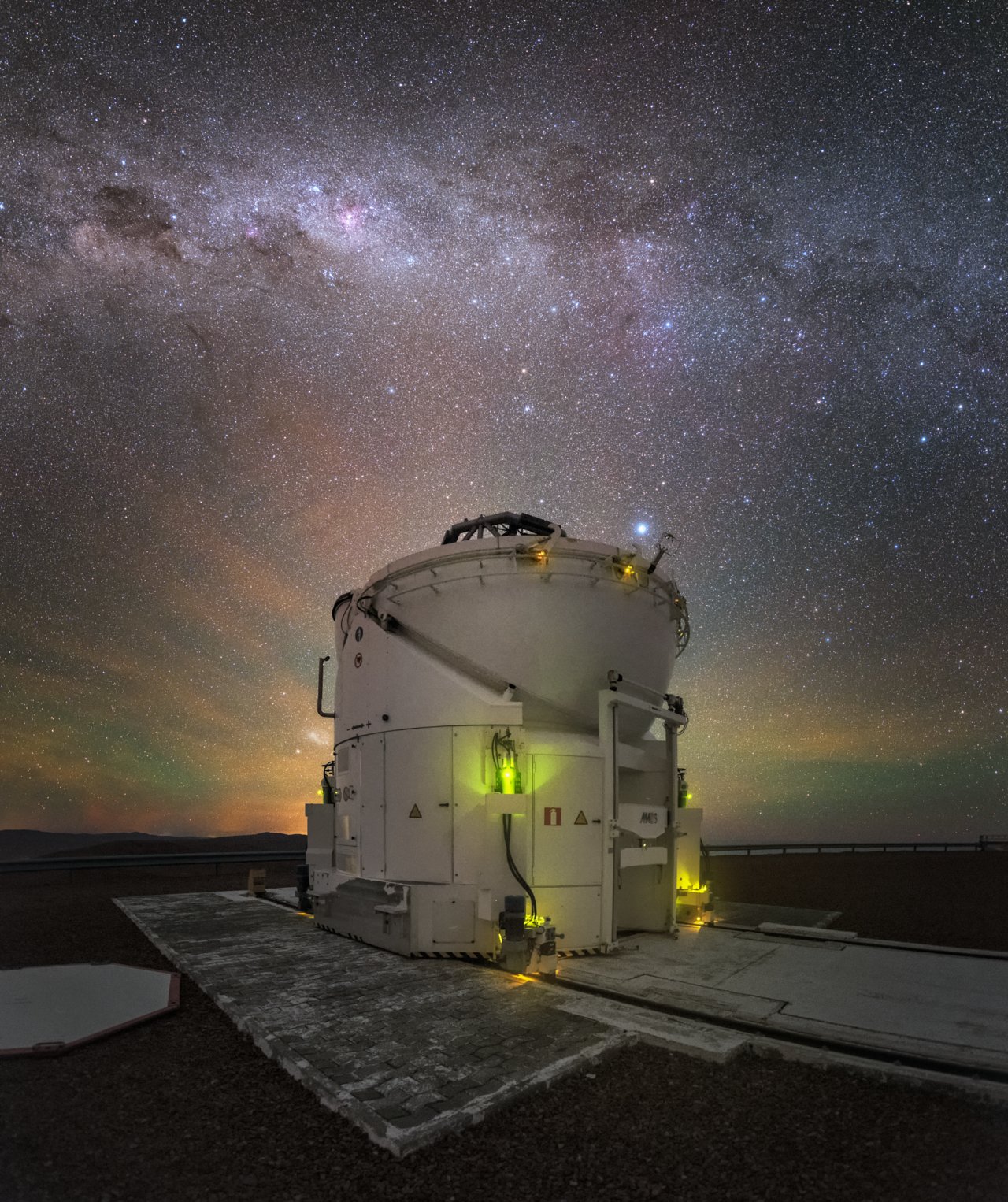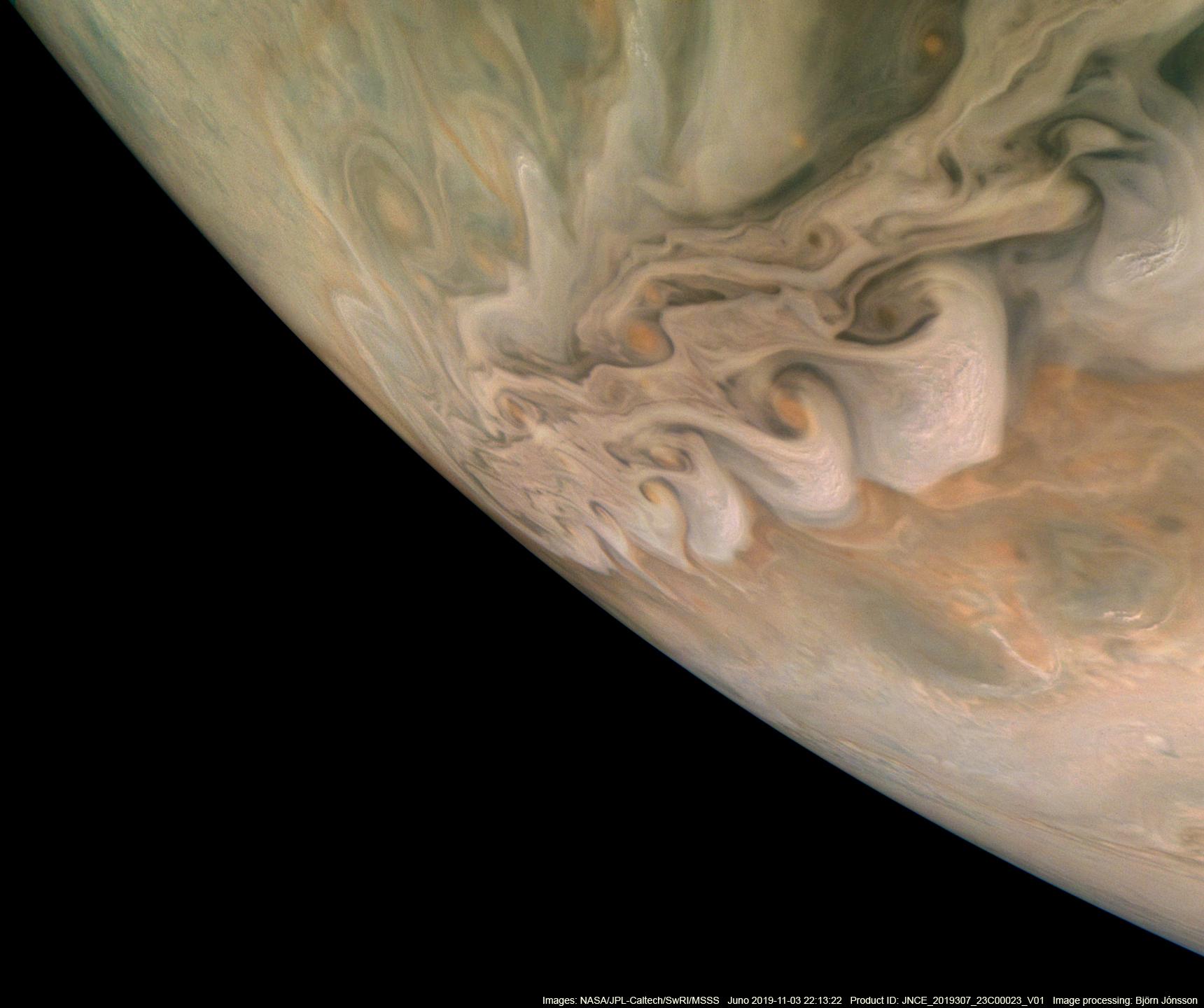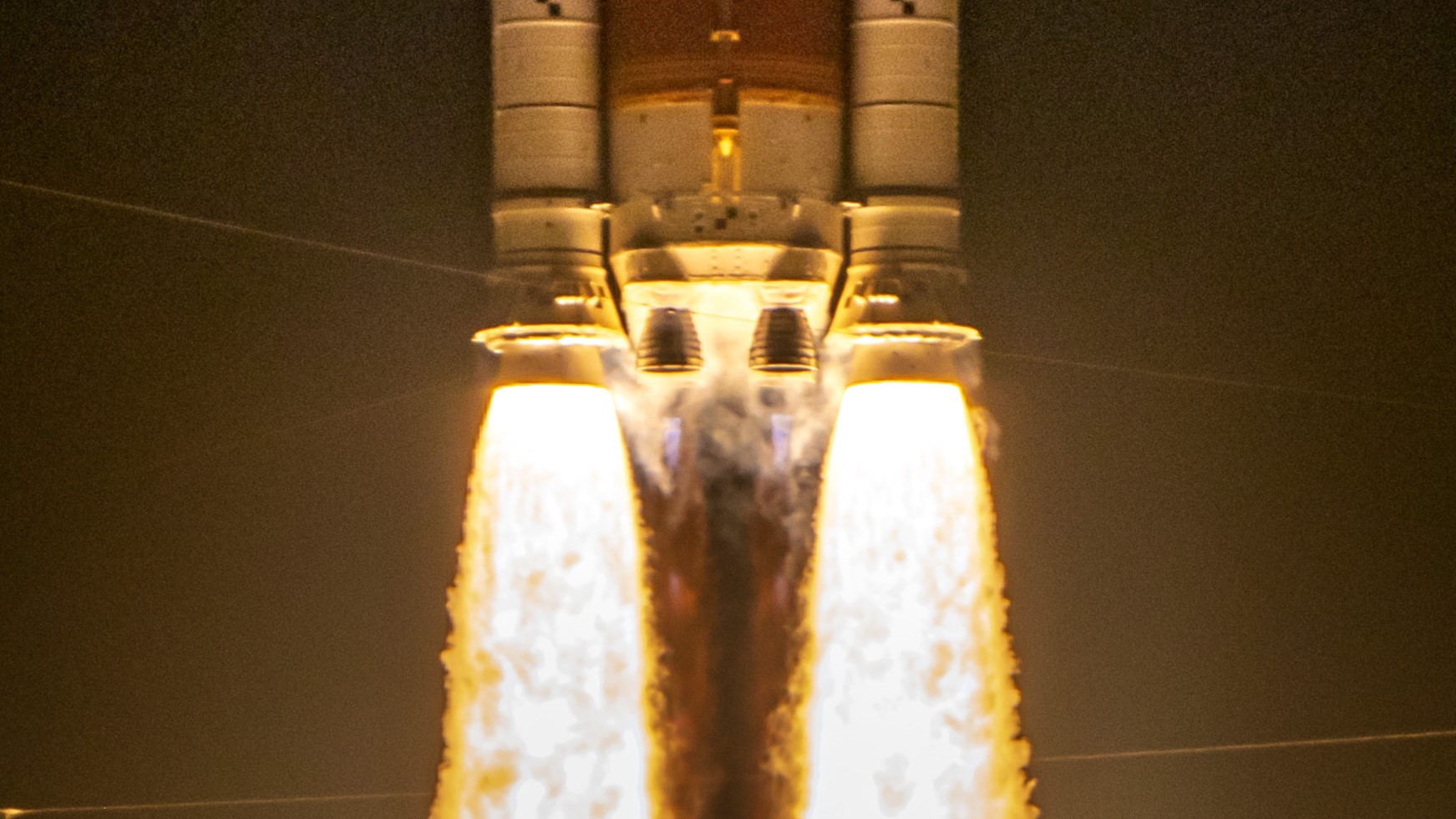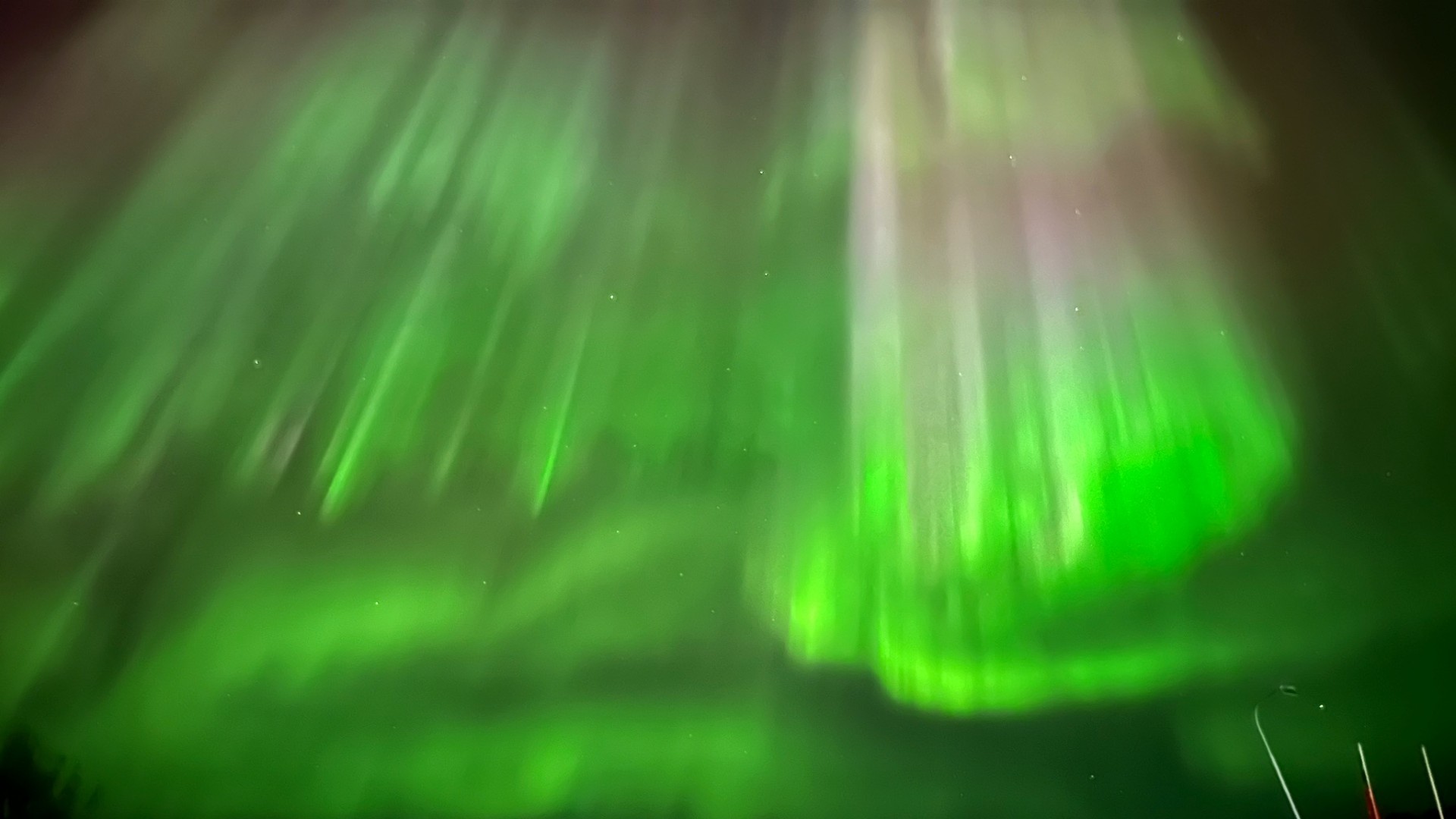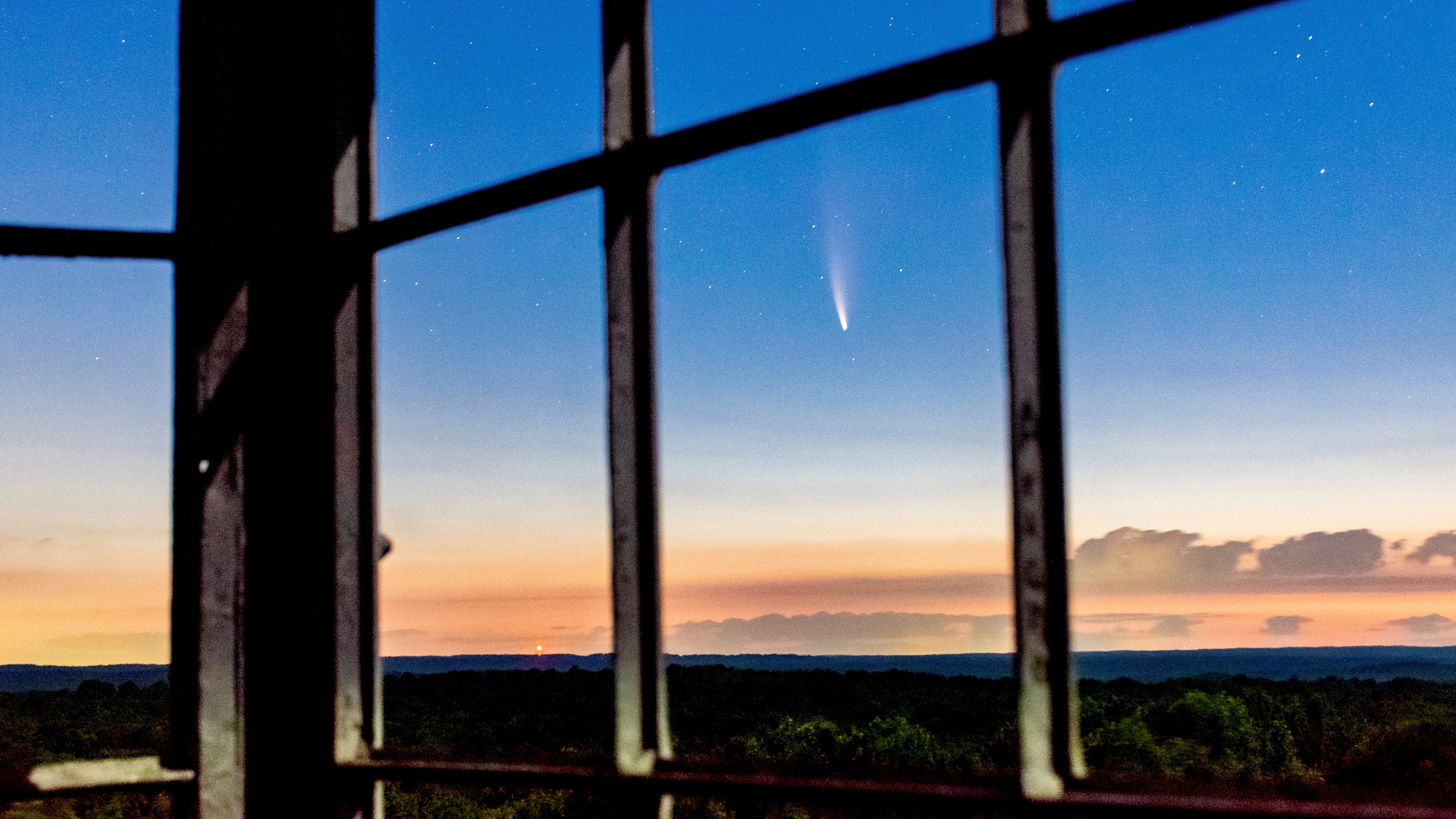Image of the Day 2019 Archive
Explore our Image of the Day 2019 Archives!
December 2019
Martian North Pole
Monday, December 2, 2019: Spiral troughs of ice and dust swirl around the Red Planet's polar ice cap in this image of the planet's north pole. Citizen scientist Kevin Gill created this map using images from the European Space Agency's Mars Express orbiter. Along with the swirling ice pattern, which scientists believe was created by winds, the image features a deep canyon known as Chasma Boreale that cuts straight through the ice cap. — Hanneke Weitering
Milky Way's Galactic Neighbor Shines Over La Silla
Tuesday, December 3, 2019: The Milky Way galaxy and one of its cosmic neighbors shimmer over the La Silla Observatory in Chile in this night sky photo by European Southern Observatory photographer Petr Horálek. That galactic neighbor is a dwarf galaxy known as the Large Magellanic Cloud, and directly beneath it is the 7-foot (2.2 meters) MPG-ESO telescope, which scans the cosmos for high-energy gamma ray bursts, or the most powerful explosions in the universe. The smaller telescope on the left is the 3-foot (1 meter) Schmidt telescope, which has been studying galaxies, star clusters, dwarf planets and supernovas for nearly 50 years. — Hanneke Weitering
Spacewalker Passes Over Venezuela
Wednesday, December 4, 2019: European Space Agency astronaut Luca Parmitano passes over the Paraguaná Peninsula of Venezuela while working outside the International Space Station on Monday (Dec. 2). This was the third spacewalk that Parmitano conducted together with NASA astronaut Drew Morgan. The spacewalking duo have been working to repair a particle detector experiment outside the station known as the Alpha Magnetic Spectrometer. — Hanneke Weitering
Australia's Wildfires Continue to Rage
Thursday, December 5, 2019: Wildfires have been raging across the southern and eastern states of Australia since October, and new imagery from the NOAA-NASA Suomi NPP weather satellite show plumes of smoke billowing from multiple fires near the coast of New South Wales. Another Suomi-NPP image captured in November show smoke from Australia's wildfires being swept across the South Atlantic Ocean, and that smoke has since spread to halfway around the world, NASA officials said in a statement. The satellite acquired this image on Wednesday (Dec. 4) at 2:45 p.m. local time, when there were 116 actively burning bush and grass fires in New South Wales alone. — Hanneke Weitering
A Cosmic Reflection
Friday, December 6, 2019: A meteor blazes across the Milky Way galaxy in this colorful view from the La Silla Observatory in Chile's Atacama Desert, captured by European Southern Observatory photo ambassador Babak Tafreshi. The starry night sky and orange airglow near the horizon are reflected in the dish of the Swedish-ESO Submillimetre Telescope. — Hanneke Weitering
A Triumphant Return
Monday, December 9, 2019: A SpaceX Falcon 9 rocket booster makes a triumphant return to Port Canaveral, Florida on Dec. 7, 2019, two days after launching a Dragon cargo ship for NASA on the CRS-19 mission. This Falcon 9 rocket made its first flight on the CRS-19 mission. It launched from Space Launch Complex-40 on Dec. 5, then returned to Earth to a pinpoint landing on the SpaceX drone ship Of Course I Still Love You. The Dragon capsule on the mission made its third trip to space. It arrived at the station on Sunday, Dec. 8. -- Tariq Malik
A Swirling Galaxy
Tuesday, December 10, 2019: Scientists used images captured by the Hubble Space Telescope's Wide Field Camera 3 to piece together this portrait of a galaxy called NGC 3175. The galaxy has given its clunky name to a cluster of neighbors that astronomers consider quite similar to our own galaxy clique, the Local Group. But NGC 3175 and its companions are located about 50 million light-years away from us. -- Meghan Bartels
Breaking space news, the latest updates on rocket launches, skywatching events and more!
Dragon Approaches the Space Station
Wednesday, December 11, 2019: As SpaceX's Dragon CRS-19 cargo resupply ship approached the International Space Station, astronauts used the Canadarm2 robotic arm to reach out and grapple the incoming spacecraft. The Dragon, which docked with the station on Sunday (Dec. 8), carried more than 5,700 lbs. (2,585 kilograms) of supplies and science experiments for the crew of Expedition 61. — Hanneke Weitering
'Cloudy with a Chance of Dust'
Thursday, December 12, 2019: Thick clouds of interstellar dust and gas permeate the star forming region RCW 36, also known as Gum 20, in this deep-space image from the European Southern Observatory's Very Large Telescope (VLT) in Chile. Located about 2,300 light-years away from Earth in the constellation of Vela (the sails), RCW 36 is part of a much larger star formation complex, known as the Vela Molecular Ridge. Astronomers used an instrument on VLT called the Focal Reducer and low dispersion Spectrograph (FORS) to capture this image of RCW 36, which is in some parts so thick with dust and gas that background light cannot pass through. These dark regions are the richest with star formation. — Hanneke Weitering
Algae Blooms Seen from Space
Friday, December 13, 2019: Green algae blooms swirl across the Baltic Sea in this image from the European Space Agency's Copernicus Sentinel-2 satellite. The green color comes from chlorophyll in the phytoplankton, or microscopic plants that drift at the surface of the water. The chlorophyll makes these algae blooms visible from space, allowing satellites to track the tiny organisms. — Hanneke Weitering
Hubble Spots Interstellar Comet Borisov
Monday, December 16, 2019: The interstellar comet Borisov appears to come face-to-face with a distant spiral galaxy in this image from the Hubble Space Telescope. Hubble captured this image on Dec. 12, as the interstellar comet was racing through the inner solar system. At the time, the object was about 260 million miles (420 million kilometers) from Earth, while the unnamed background galaxy (officially designated 2MASX J10500165-0152029), is nearly half a billion light-years away. The galaxy appears smudged because Hubble was tracking the motion of the comet, which was zooming through space at a speed of about 109,000 mph (175,000 km/h). — Hanneke Weitering
Psychedelic Swirls on Jupiter
Tuesday, December 17, 2019: Jupiter goes psychedelic in this new, full-disk image from NASA's Juno spacecraft. Citizen scientist Prateek Sarpal created this view of Jupiter using data that the orbiter's JunoCam instrument collected during its 22nd perijove, or close approach, on Sept. 12. Sarpal named this creation, "A mind of limits, a camera of thoughts." You can find more funky Jupiter art and raw images from Juno that are free to download and edit in NASA's JunoCam portal. — Hanneke Weitering
CHEOPS Launches on Exoplanet Mission
Wednesday, December 18, 2019: An Arianespace Soyuz rocket lifts off from the Guiana Space Center in French Guiana, carrying the European Space Agency's newest exoplanet-hunting satellite. The Characterizing Exoplanet Satellite (CHEOPS) mission, which launched this morning at 3:54 a.m. EST (5:54 a.m. local time; 0854 GMT) will study alien worlds to learn more about their characteristics and to determine which, if any, may be hospitable to extraterrestrial life. — Hanneke Weitering
A 'Candy Cane' in the Milky Way
Thursday, December 19, 2019: NASA scientists have spotted what looks like a candy cane-shaped cloud of glowing gas near the center of the Milky Way. The "candy cane" is about 190 light-years long and contains ionized gas that emits radio waves. Astronomers discovered it using an instrument known as the Goddard-IRAM Superconducting 2-Millimeter Observer, or GISMO, together with a radio telescope on Pico Veleta in Spain. You can see the full, annotated version of this image here. — Hanneke Weitering
Starliner Launches to Space
Friday, December 20, 2019: A United Launch Alliance Atlas V rocket carrying Boeing's CST-100 Starliner spacecraft soars into space after launching from Cape Canaveral Air Force Station in Florida this morning. Down below (from left to right), Florida Gov. Ron DeSantis, left, ULA president and CEO Tory Bruno and NASA Administrator Jim Bridenstine observe from NASA's Kennedy Space Center. The flight went according to plan until about 15 minutes after liftoff, when Starliner could not complete its orbit insertion burn due to an anomaly. Starliner was supposed to dock with the International Space Station on Saturday (Dec. 21), but it will now make an early landing on Sunday (Dec. 22) without having reached the space station. — Hanneke Weitering
Starliner Returns
Monday, December 23, 2019: Boeing's CST-100 Starliner ejects its heat shield while parachuting down to Earth before its historic landing on Sunday (Dec. 22). The uncrewed capsule touched down safely at the White Sands Missile Range in New Mexico, at 7:58 a.m. EST (1258 GMT), after spending only about 48 hours in space. It was originally scheduled to touch down six days later after a visit to the International Space Station, but Starliner never reached the orbiting laboratory after an anomaly during the launch left it in the wrong orbit. — Hanneke Weitering
Hubble Spots a Galactic Bulge
Tuesday, December 24, 2019: The spiral galaxy IC 2051, seen here in an image from the Hubble Space Telescope, is shaped like a flying saucer, with a bulge of stars at the center of its flat disk. This type of galactic bulge is believed to influence the growth of supermassive black holes that lurk at the center of most spiral galaxies, and they play a key role in how galaxies evolve. — Hanneke Weitering
White Christmas
Wednesday, December 25, 2019: The Earth is a snowy winter wonderland in this stunning photo from European Space Agency astronaut Luca Parmitano on the International Space Station. Parmitano snapped this photo on Christmas Eve (Dec. 24) posting it on Twitter with a holiday message for all.
"Winter landscapes: The moon rises over a snow covered world," he wrote. Parmitano commands the space station's Expedition 61 crew. You can see their Christmas and holiday video message from space here! — Tariq Malik
A Christmas Eve Launch
Thursday, December 26, 2019: A dazzling view of the first stage engines of a Russian Proton rocket firing to launch the Electro-L 3 weather satellite into orbit from Baikonur Cosmodrome, Kazakhstan on Dec. 24, 2019. You can see a video of the Christmas Eve launch here, along with a mission overview. — Tariq Malik
A Stellar Snowflake
Friday, December 27, 2019: This view from NASA's Spitzer Space Telescope shows a cosmic snowflake, an intricate structure that forms part of the so-called Christmas Tree Cluster. "The newly revealed infant stars appear as pink and red specks toward the center and appear to have formed in regularly spaced intervals along linear structures in a configuration that resembles the spokes of a wheel or the pattern of a snowflake. Hence, astronomers have nicknamed this the 'Snowflake Cluster,' NASA officials explained in an image description. The Spitzer Space Telescope is an infrared space observatory. — Tariq Malik
A colorful sky
Monday, December 30, 2019: The skies above the European Southern Observatory's Paranal Observatory in Chile's Atacama Desert are ablaze with color in this dazzling photo by photographer Yuri Beletsky released by ESO Dec. 30. In the foreground is one of ESO's Auxiliary Telescopes (ATs), which are used to make up the Very Large Telescope (VLT), bathed in an eerie yellow-green glow while the Milky Way glitters overhead. — Tariq Malik
Swirls of Jupiter
Tuesday, December 31, 2019: A swirling band of clouds churns on Jupiter in this amazing image from NASA's Juno spacecraft currently orbiting the largest planet in our solar system. This image is an enhanced view by citizen scientist Björn Jónsson, who processed an image taken on Nov. 3 by Juno's JunoCam as the spacecraft was 3,200 miles (5,200 km) above Jupiter's cloudtops.
Small "pop-up" storms are visible rising above the lighter areas in the clouds. They're most noticeable at the right, according to a NASA description. — Tariq Malik
Can't find the date you're looking for? It may have been a weekend or holiday, when we don't normally update our Image of the Day.
Image of the Day Archives
Image of the Day 2024 Archive
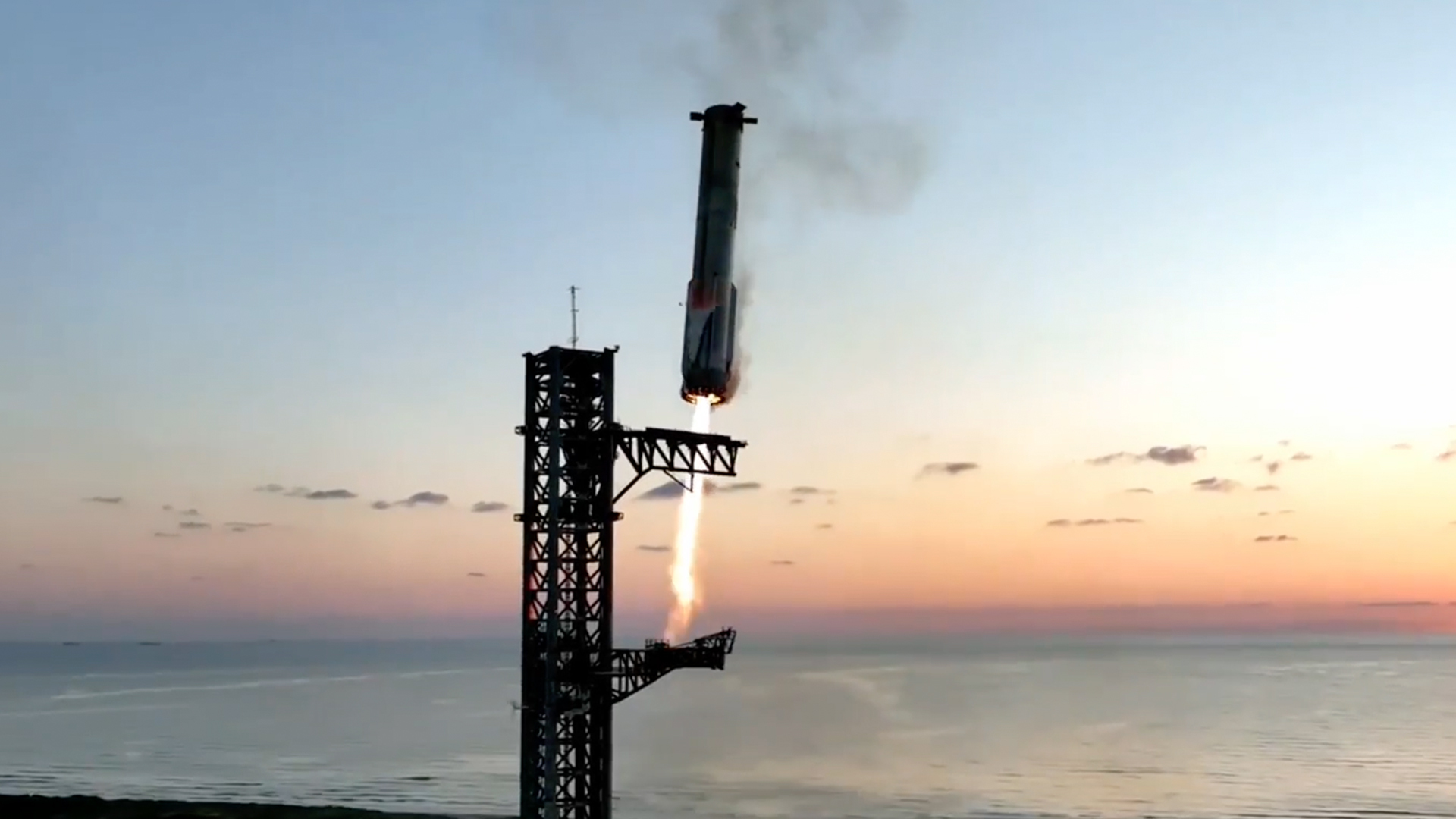
Image of the Day 2023 Archive
Image of the Day 2022 Archive
Image of the Day 2021 Archive
Image of the Day 2020 Archive
Image of the Day 2019 Archive

Space.com is the premier source of space exploration, innovation and astronomy news, chronicling (and celebrating) humanity's ongoing expansion across the final frontier. Originally founded in 1999, Space.com is, and always has been, the passion of writers and editors who are space fans and also trained journalists. Our current news team consists of Editor-in-Chief Tariq Malik; Editor Hanneke Weitering, Senior Space Writer Mike Wall; Senior Writer Meghan Bartels; Senior Writer Chelsea Gohd, Senior Writer Tereza Pultarova and Staff Writer Alexander Cox, focusing on e-commerce. Senior Producer Steve Spaleta oversees our space videos, with Diana Whitcroft as our Social Media Editor.

